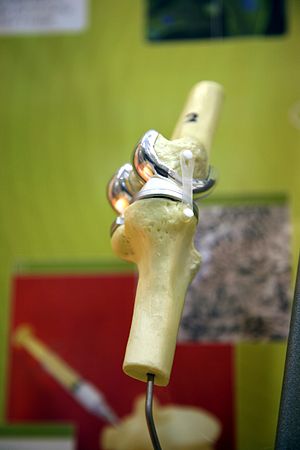A blast of gamma radiation could toughen up plastic prosthetic joints to make them strong enough to last for years
A blast of gamma radiation could toughen up plastic prosthetic joints to make them strong enough to last for years, according to researchers in China writing in the current issue of the International Journal of Biomedical Engineering and Technology.
Whole joint replacement, such as hip and knee replacement, commonly use stainless steel, titanium alloys or ceramics to replace the damaged or diseased bone of the joint. Non-stick polymer or nylon is usually used to coat the artificial joint to simulate the cartilage. However, none of these materials are ideal as they produce debris within the body as the joint is used, which leads to inflammation, pain and other problems.
Now, Maoquan Xue of the Changzhou Institute of Light Industry Technology, has investigated the effect of adding ceramic particles and fibers to two experimental materials for coating prosthetic joints, UHMWPE (ultra-high-molecular-weight polyethylene) and PEEK (polyether ether ketone). Alone neither UHMWPE nor PEEK is suitable as a prosthetic cartilage materials because both crack and fracture with the kind of everyday stresses that a hip or knee joint would exert on them. The problem is that the long polymer chains within the material can readily propagate applied forces causing tiny fractures to grow quickly and the material to fail.
Xue has now demonstrated that by adding ceramic particles to the polymers and then blasting the composite with a short burst of gamma-radiation it is possible to break the main polymer chains without disrupting the overall structure of the artificial cartilage. There is then no way for microscopic fractures to be propagated throughout the material because there are no long stretches of polymer to carry the force from one point to the next. The resulting treated material is thus much tougher than the polymer alone and will not produce the problematic debris within a joint that might otherwise lead to inflammation and pain for the patient.
Bookmark this page for “Artificial Joints” and check back regularly as these articles update on a very frequent basis. The view is set to “news”. Try clicking on “video” and “2” for more articles.
>








